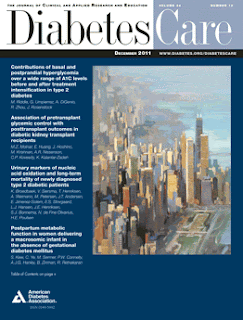Roughly 500 delegates from 125 countries descended on the United Nations Environmental Program [UNEP] headquarters in Nairobi, Kenya to negotiate a legally-binding global treaty to reduce and, where possible eliminate, global mercury release in the environment. [1]
The treaty aims to hold governments, companies, and individuals accountable for mercury release into the environment. While there are many ways mercury can enter the environment – adversely affecting public health, as mercury is known to severely impact the brain and nervous system – the focus of this year’s meeting was to discuss the reduction of mercury and consider policy options to criminalize the use of mercury in small-scale gold mining [SGM] operations.
What is the connection between mercury and gold mining and why does it matter to international law?
In small-scale gold mining [SGM] operations mercury is used to purify gold as it binds tightly to the metal allowing miners to easily extract high-quality gold from the ore. Mercury is used in mining processes in over 70 countries in Africa, Asia, and South America because it is cheap, readily available, and enables miners to swiftly extract gold.
Globally, SGM releases 1000 tons of mercury into the environment. Recently, SGM operations were awarded the not-so-honorable distinction of ‘second largest global emitter of mercury’ – first place went to the coal-combustion sector!
If SGM operations contribute to the global mercury burden, who are the emitters and will they be held accountable to international law?
 The typical profile of a not-so-evil SGM emitter is an individual or household living in a rural area of the developing world, where abject poverty is pervasive. These individuals lack basic provisions like clean water, a stable food source, and basic health care; their financial resources are immeasurably stretched; and miners typically lack education and access to improved technologies – approximately 10-15 million individuals, in 70 countries, practice SGM. In Tanzania alone, it is estimated that more than 400,000 individuals practice SGM and entire families are usually part of the mining operation – money generated from individual gold-mining operations is oftentimes the sole-source of household income.
The typical profile of a not-so-evil SGM emitter is an individual or household living in a rural area of the developing world, where abject poverty is pervasive. These individuals lack basic provisions like clean water, a stable food source, and basic health care; their financial resources are immeasurably stretched; and miners typically lack education and access to improved technologies – approximately 10-15 million individuals, in 70 countries, practice SGM. In Tanzania alone, it is estimated that more than 400,000 individuals practice SGM and entire families are usually part of the mining operation – money generated from individual gold-mining operations is oftentimes the sole-source of household income. And, YES, these SGM emitters will be expected to strictly abide by international law.
Understanding the complicated marriage between global policy and individual livelihoods
In a recent publication [2], Samuel Spiegel explores the complexities of the SGM industry and the factors that will cause a global mercury abatement treaty to be ineffective and irresponsible if the needs of the small-scale mining community are not taken into consideration. Spiegel’s most relevant finding was despite the rising cost of mercury, the hazardous occupational conditions, and looming regulations, small-scale gold miners continue to use mercury for their operations; this indicates that complex social and economic-based needs are actually driving mercury’s continued use.
Below are some of the barriers that may prevent miners from eliminating mercury during mining activities:
- They do not have the financial resources or the ability to access cleaner technology, which is often more expensive than mercury.
- There is a deeply embedded black-market for mercury that has enabled miners to still purchase mercury despite global prices rising 300% in the recent past.
- Strict laws regulating use of mercury in SGM will likely provide unintended support for black-market purchases of mercury.
- When creating programs or legislation, foreign experts and policy makers have shamefully overlooked the mining communities reliance on mercury –besides mercury, there are few alternative options currently available to the small-scale gold mining community.
Overall, I think the challenges above are summarized well by Spiegel who argues that mercury pollution abatement strategies will fail unless international governments and national agencies explicitly address local social and economic needs.
And while big business and big brother [government] are hammering out the details of a global ban on mercury, is there something that we, as consumers of gold products, can do to make an impact?
The answer is YES!
Do you care?
Hopefully, and if you do, there is something that the average American can do.
- First, think about the minerals you are purchasing and where they are coming from.
- If you decide to purchase gold, there is a fair-trade, environmentally friendly program in Colombia called Green Gold:
- Also, the Alliance for Responsible Mining works to educate, set standards, and support producers and miners.
- Furthermore, gold consumers, like you and I, can financially support organizations like the ones above, or NGOs like the Blacksmith Institute, which has training programs for miners to learn how to appropriately use different technologies to recapture the mercury for reuse.
1) United nations Environmental Program: Global Mercury Partnership. http://www.unep.org/hazardoussubstances/Mercury/GlobalMercuryPartnership/tabid/1253/Default.aspx
2) Spiegel, Samuel. Socioeconomic Dimensions of Mercury Pollution Abatement: Engaging Artisanal Mining Communities in Sub-Saharan Africa. Ecological Economics. 68 (2009); 3072-3083.
3) picture source: http://ecopolproject.blogspot.com/2010/10/gold-mining-cause-considerable.html
Cassie O'Lenick is in her first-year of a PhD program at Emory University in Environmental Health Sciences. She is an outdoor enthusiast, a self-diagnosed goof-ball, and big fan of science and public health. My one unachievable goal in life is to give everyone in this great big world a hug or a high-five [whatever is more culturally acceptable at the time].











